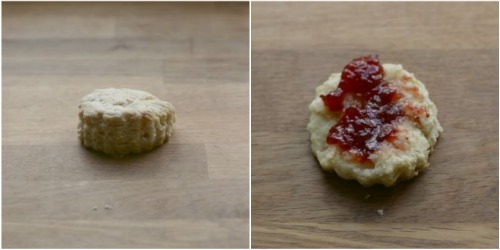
Just over a year ago, I visited London again for the first time in eight years. Except for my favorite cafe in Bloomsbury that had closed, the city hadn't changed. There was still soot on the churches, black cabs darting through narrow streets, a hint of gray light as the sun starts to set. This time, no longer on a student's budget, we had afternoon tea at the Dorchester. It had all the pomp and circumstance you'd expect like perfectly tender scones and smoked salmon sandwiches. But what I love most about afternoon tea is the state of mind. There's something about it, isn't there? Pausing from work from 3:30 to 4 pm each day, brewing a dark cup of tea, watching cream swirl in the teacup, taking that first, hot sip. It truly helps you relax and ease into things. It's the perfect time for a mental break, too, when you can let yourself wander, mull over a creative project, or daydream. I wish we took this ritual more seriously in America, that it was part of our culture so that not having tea would seem, well, uncivilized. A girl can dream.
Currently, I drink tea at least once a day, often twice. After logging into my computer, I walk to the office kitchen to brew a cup. (And by brew, I mean push the red button on the water dispenser and dunk my tea bag inside the cup.) Nothing fancy, but I add my dash of whole milk and head back to catch up on my email. We have to find the ways to embrace these simple rituals in our life, and take the time we need to reflect.
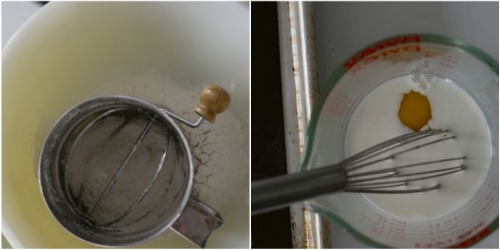
After Lunch
By Po Chu-i
Translation by Arthur Waley
After lunch -- one short nap;
One waking up -- two cups of tea.
Raising my head, I see the sun's light
Once again slanting to the south-west.
Those who are happy regret the shortness of the day;
Those who are sad tire of the year's sloth.
But those whose hearts are devoid of joy or sadness
Just go on living, regardless of 'short' or 'long'.
Po Ch-i, a writer and government official, is considered one of China's great poets. He worked as a librarian before retiring to a monastery in 832, but was banished more than once for arguing against government policies during the Tang dynasty. Although this poem was written sometime between 772-846 C.E (!), it's incredible how much it resonates with our modern lives. His poems observed the human condition in clear language, which is why when reading it for the first time, you may not have realized how ancient the words really are.
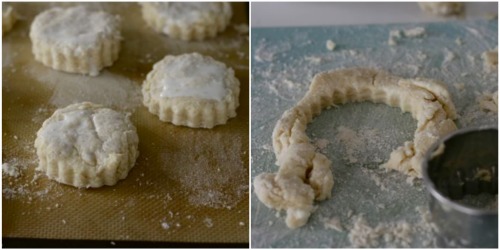
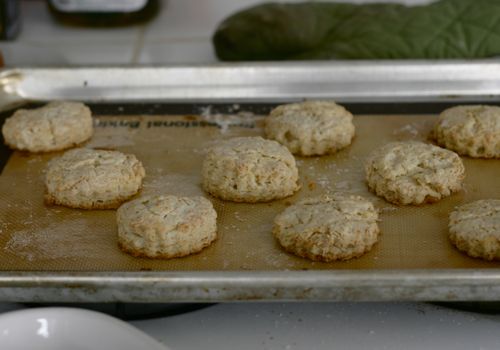
The ritual of tea experienced then and now is so similar. It is a moment in time (should we have the opportunity to take it), that we can reflect on which kind of person we are. Are we sad and disappointed, uninterested in our own life, or are we the kind who is neither joyful or sad, and simply existing? It is his first observation that we should strive for, to be so joyful that there seems to never be enough hours in the day for all we want to experience and accomplish. It's a tall order to be this enthusiastic every day, but I hope that all of us are reaching for it in some capacity. Doing what you love is a good place to start. And knowing what you believe in. And drinking tea, of course.
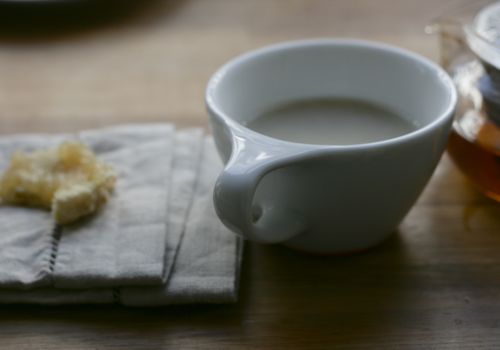
SIMPLE SCONES
What goes better with tea than a scone? One of the tricks I like to use when making scones is to prep the butter well ahead of time. I start by cutting it into very small pieces, about the size of peas, then placing it in a small bowl. If you have some time, put it in the fridge for 20 minutes, or if you're impatient, try the freezer for about 10 minutes. You want the butter really cold. Most recipes call for the butter being cut into small pieces, then worked into the dough until "roughly the size of peas." In my experience, there is a much greater risk of over mixing by doing it this way, so I like to cut the butter into pieces that are already the size of what I will ultimately need.
Recipe adapted from Martha Stewart
Makes about 10 scones
2 cups all-purpose flour
3 tablespoons sugar
1 tablespoon baking powder
1/2 teaspoon salt
6 tablespoons unsalted butter
1/3 cup whole milk, plus more for brushing
2 large eggs
Sift the flour, sugar, baking powder and salt into a large bowl. On a cutting board, cut the butter into very small pieces, about the size of peas, and add them to a small bowl. Place in the refrigerator for 20 minutes to chill completely. While the butter chills, preheat the oven to 400 degrees.
When you're ready to mix, pour the milk into a glass measuring cup and add the eggs, beating with a fork. Remove the butter from the refrigerator and scatter the pieces over the flour. Use a pastry cutter to blend the butter into the flour until evenly distributed.
Make a well in the center of the flour and pour in the cream and eggs. Using a fork, stir lightly until the dough just comes together. Turn out dough onto a lightly floured work surface. With confidence, give the dough a couple gentle kneads and press it into a round about 3/4-inch thick. Cut into 2-inch round circles and place on a silpat-lined baking sheet. Brush the tops with milk. Bake until golden brown, about 16-20 minutes. Serve warm with jam.

